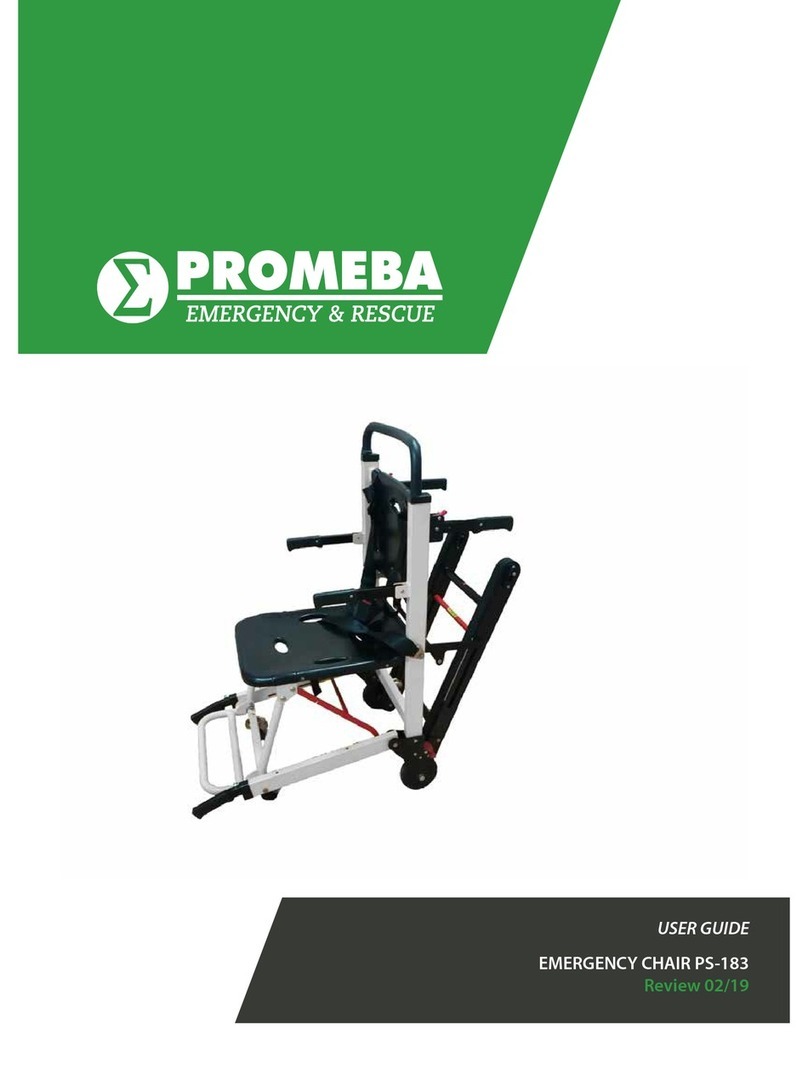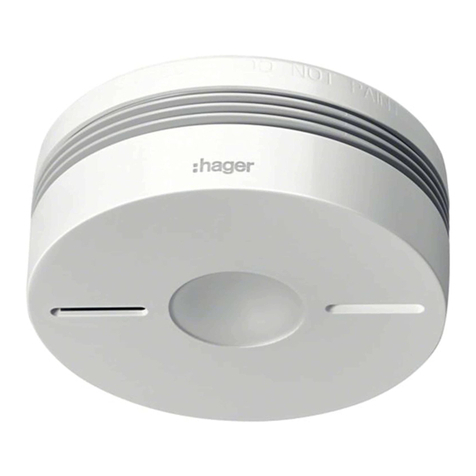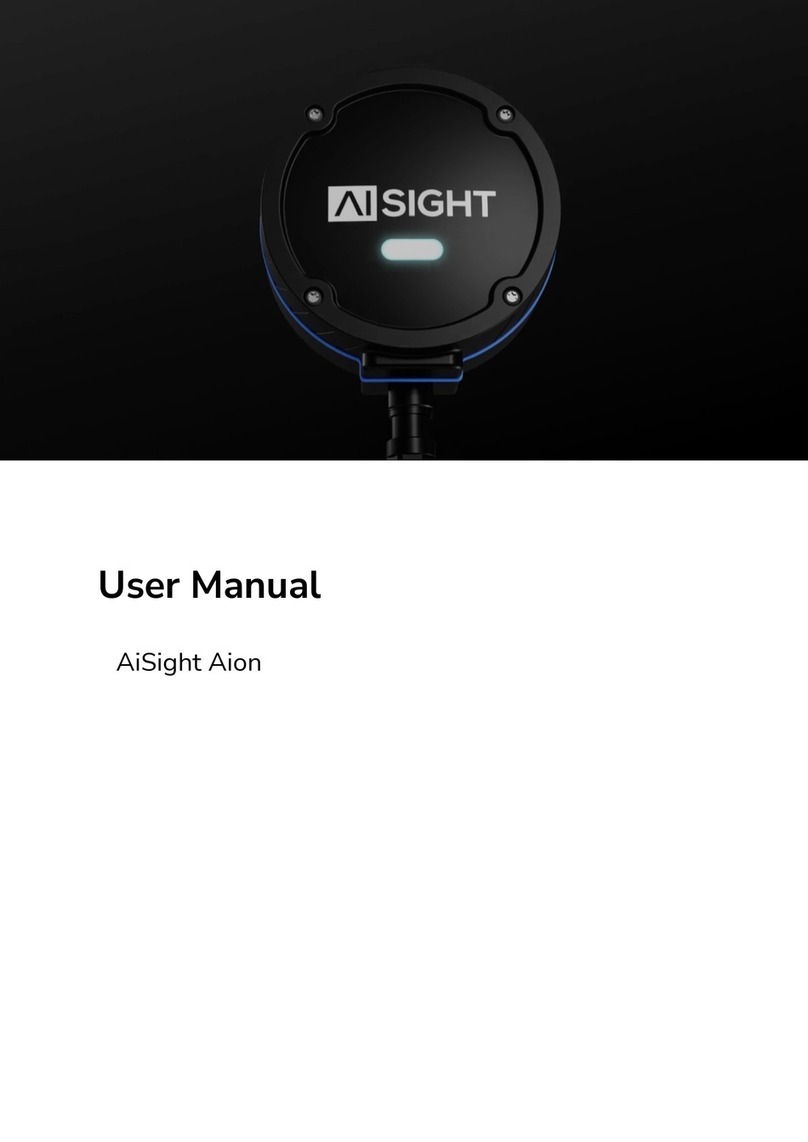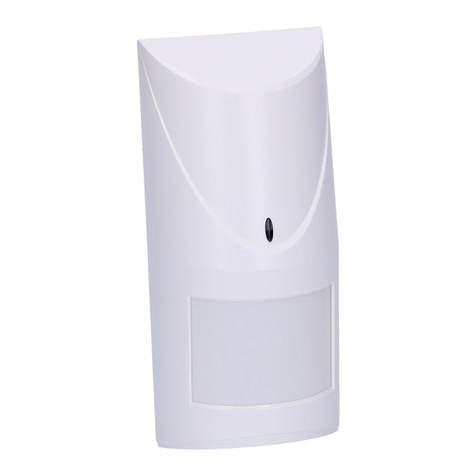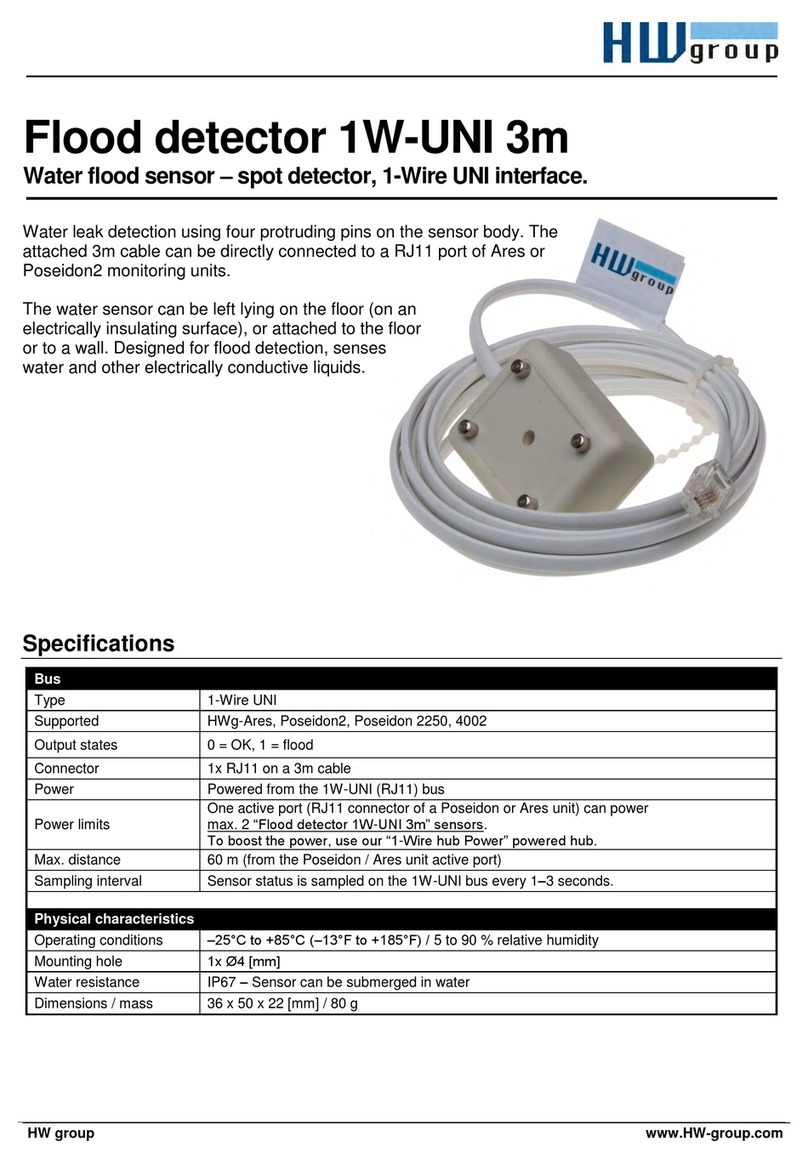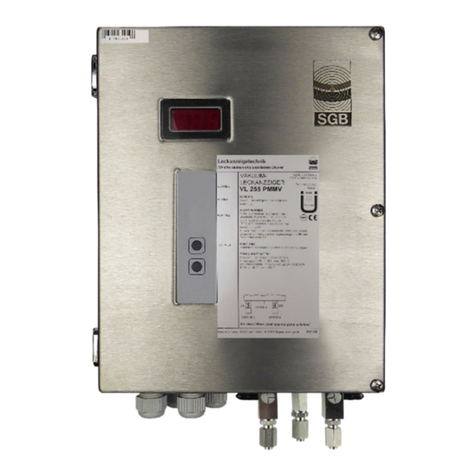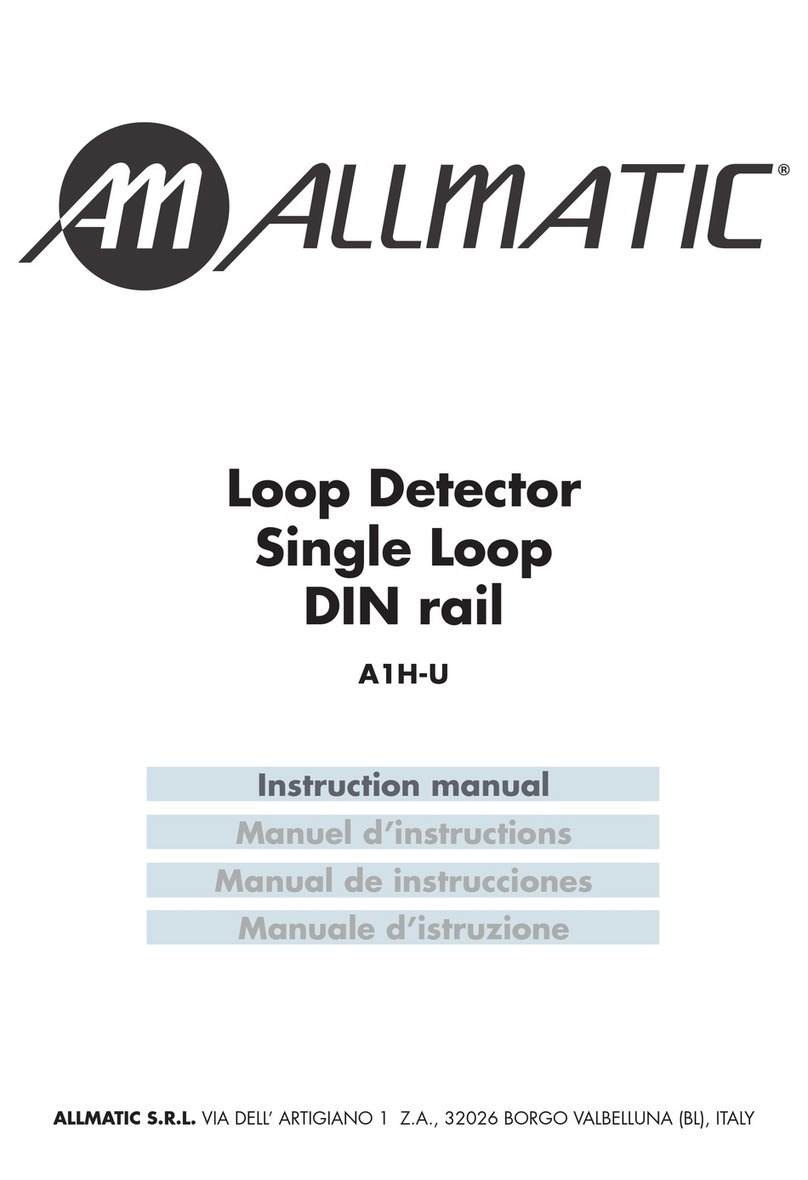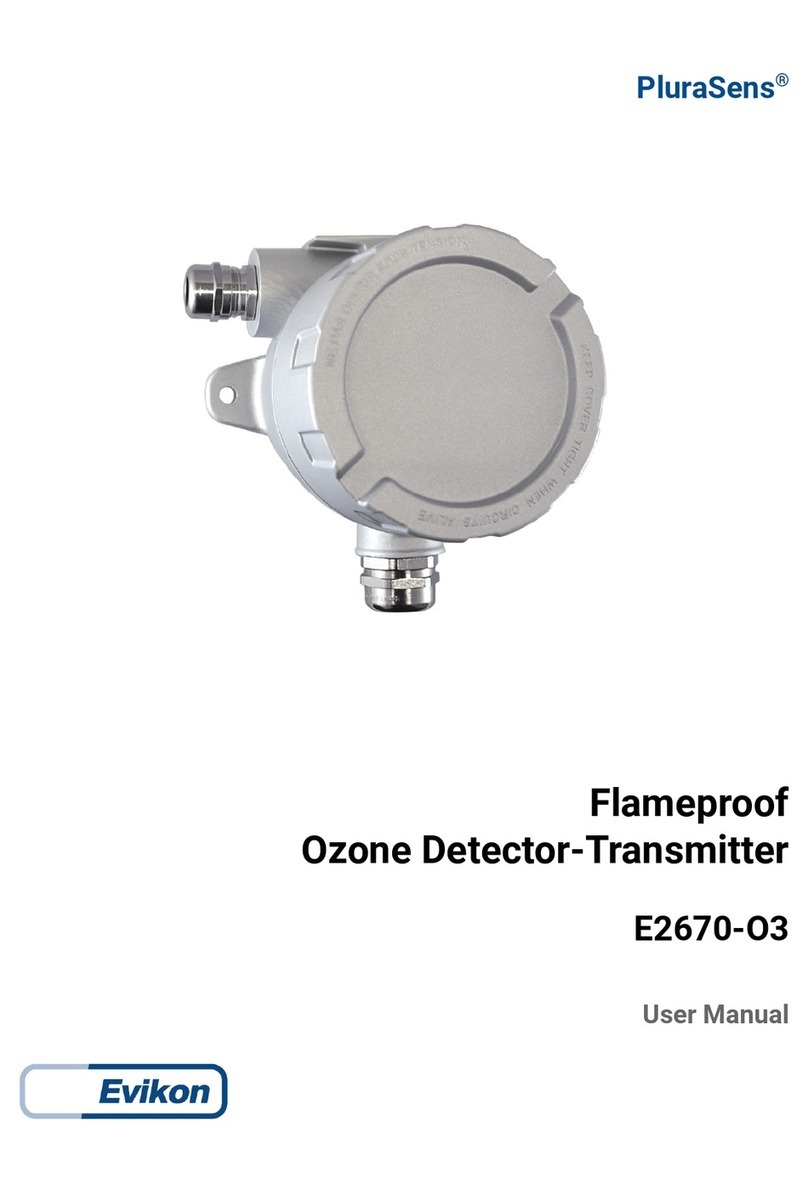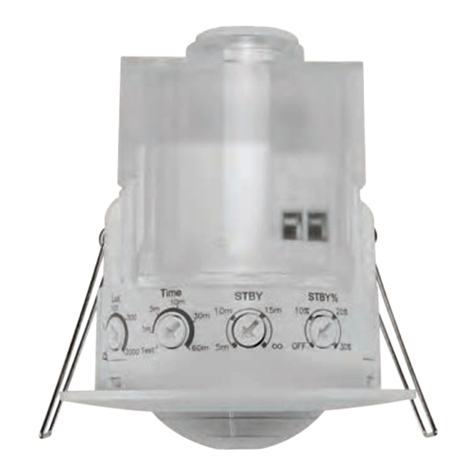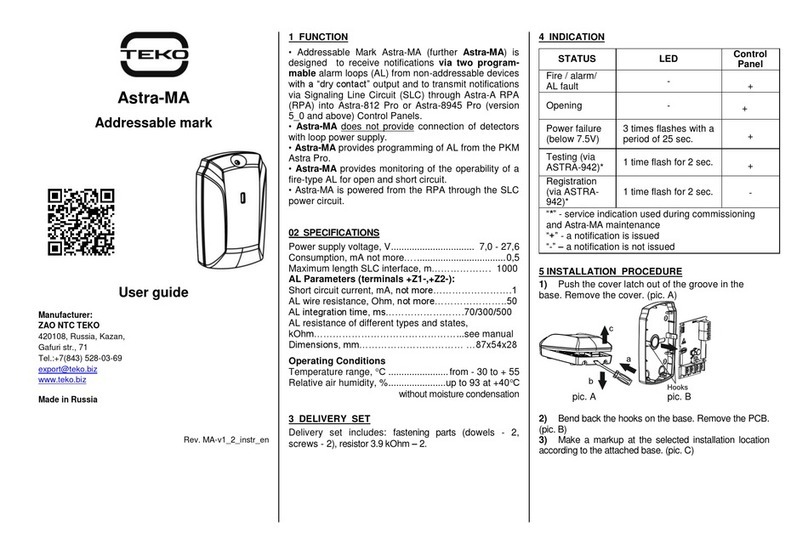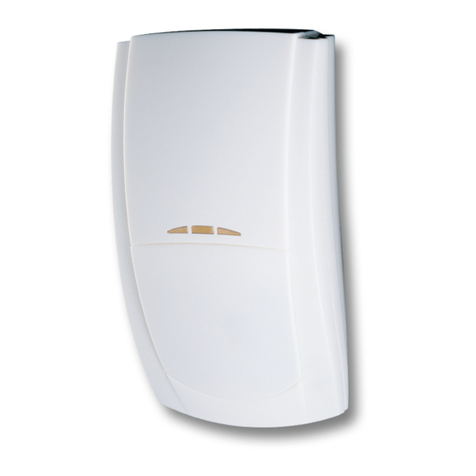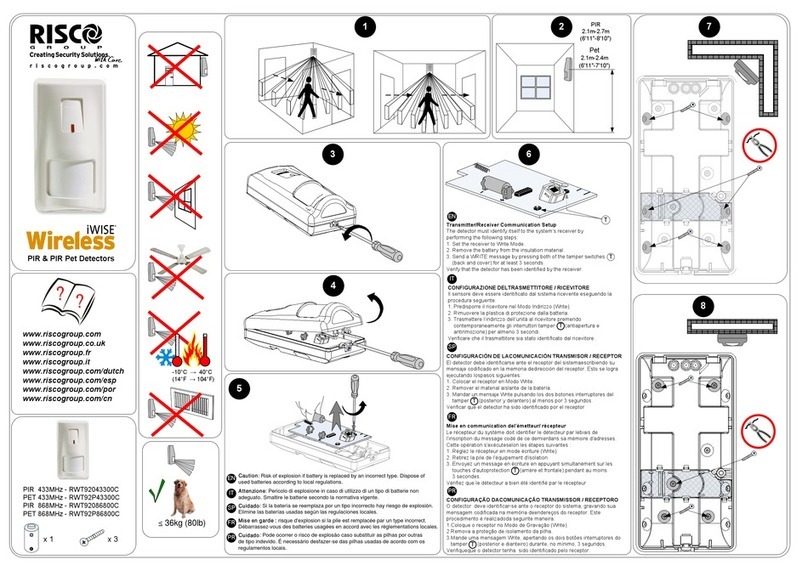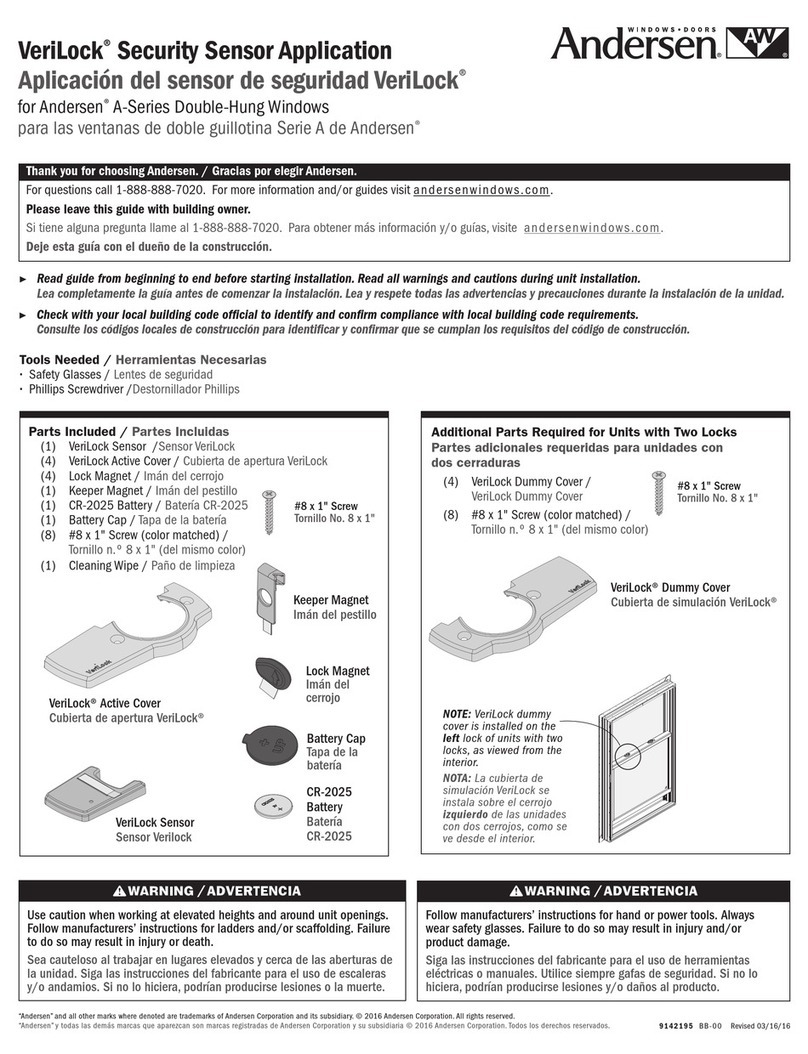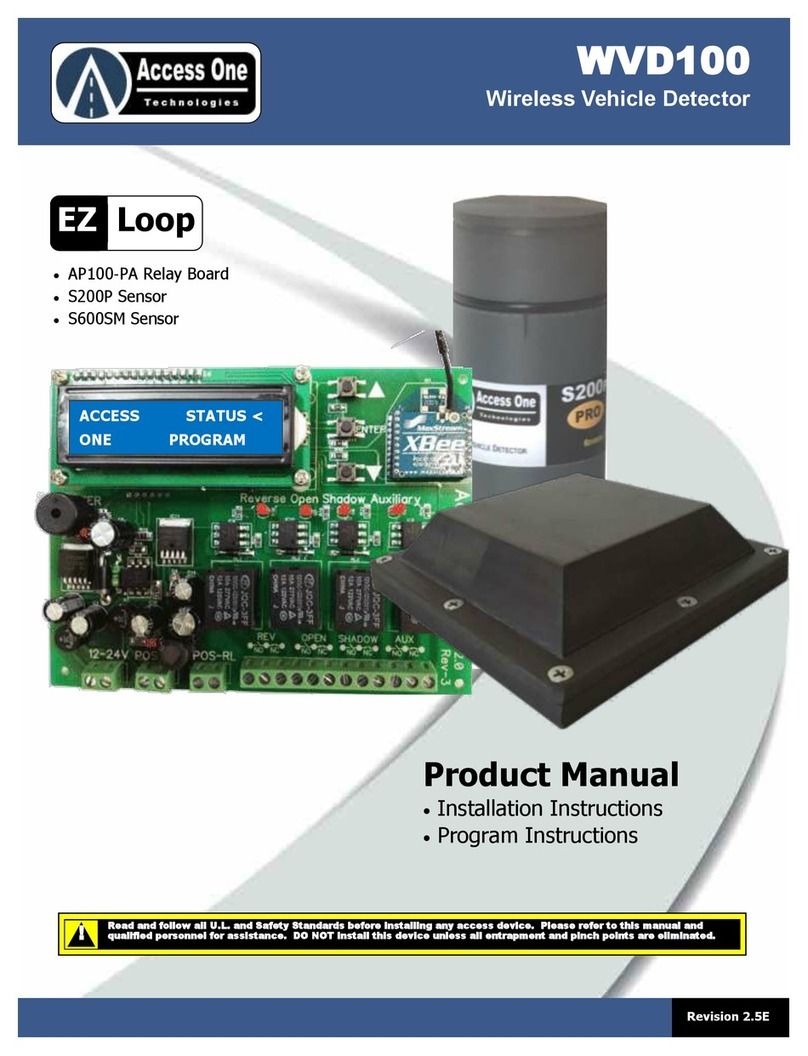TechnipFMC Proline Promass 300 EtherNet/IP Instruction Manual

MANUAL
KA01361O/06/EN/01.17
71382429
Brief Operating Instructions Manual
Proline 300 EtherNet/IP
Transmitter with Coriolis Sensor
Brief Operating Instructions
Proline 300
EtherNet/IP
Transmitter with Coriolis sensor
These instructions are Brief Operating Instructions; they are
not a substitute for the Operating Instructions pertaining to
the device.
Transmitter Brief Operating Instructions
Contain information about the transmitter.
Sensor Brief Operating Instructions → 3
Brief Operating Instructions
Proline 300
HART
Transmitter with Coriolis sensor
These instructions are Brief Operating Instructions; they are
not a substitute for the Operating Instructions pertaining to
the device.
Transmitter Brief Operating Instructions
Contain information about the transmitter.
Sensor Brief Operating Instructions → 3

Proline 300 EtherNet/IP
2
Order code:
Ext. ord. cd.:
Ser. no.:
www.endress.com/deviceviewer Endress+Hauser
Operations App
XXXXXXXXXXXX
XXXXX-XXXXXX
XXX.XXXX.XX
Serial number
1.
3.
2.
A0023555

Proline 300 EtherNet/IP Brief Operating Instructions for the device
3
Brief Operating Instructions for the device
The device consists of a transmitter and a sensor.
The process of commissioning these two components is described in two separate manuals:
• Sensor Brief Operating Instructions
• Transmitter Brief Operating Instructions
Please refer to both Brief Operating Instructions when commissioning the device as the
contents of the manuals complement one another:
Sensor Brief Operating Instructions
The Sensor Brief Operating Instructions are aimed at specialists with responsibility for
installing the measuring device.
• Incoming acceptance and product identification
• Storage and transport
• Installation
Transmitter Brief Operating Instructions
The Transmitter Brief Operating Instructions are aimed at specialists with responsibility for
commissioning, configuring and parameterizing the measuring device (until the first
measured value).
• Product description
• Installation
• Electrical connection
• Operation options
• System integration
• Commissioning
• Diagnostic information
Additional device documentation
These Brief Operating Instructions are the Transmitter Brief Operating Instructions.
The "Sensor Brief Operating Instructions" are available via:
• Internet: www.endress.com/deviceviewer
• Smart phone/tablet: Endress+Hauser Operations App
Detailed information about the device can be found in the Operating Instructions and the
other documentation:
• Internet: www.endress.com/deviceviewer
• Smart phone/tablet: Endress+Hauser Operations App

Table of contents Proline 300 EtherNet/IP
4
Table of contents
1 Document information ............................................................ 5
1.1 Symbols used ......................................................................... 5
2 Basic safety instructions .......................................................... 7
2.1 Requirements for the personnel ............................................................ 7
2.2 Designated use ........................................................................ 7
2.3 Workplace safety ...................................................................... 8
2.4 Operational safety ......................................................................8
2.5 Product safety ......................................................................... 8
2.6 IT security ............................................................................ 9
2.7 Device-specific IT security ................................................................ 9
3 Product description .............................................................. 10
4 Installation ...................................................................... 11
4.1 Turning the transmitter housing .......................................................... 11
4.2 Turning the display module .............................................................. 12
4.3 Cover locking ........................................................................ 13
4.4 Transmitter post-installation check ........................................................ 13
5 Electrical connection ............................................................ 14
5.1 Connection conditions .................................................................. 14
5.2 Connecting the measuring device ......................................................... 17
5.3 Hardware settings ..................................................................... 25
5.4 Ensuring potential equalization ........................................................... 26
5.5 Ensuring the degree of protection ......................................................... 26
5.6 Post-connection check ..................................................................27
6 Operation options ............................................................... 28
6.1 Overview of operation options ............................................................ 28
6.2 Structure and function of the operating menu ................................................ 29
6.3 Access to the operating menu via the local display ............................................. 30
6.4 Access to the operating menu via the operating tool ............................................ 33
6.5 Access to the operating menu via the Web server .............................................. 33
7 System integration .............................................................. 34
7.1 Overview of device description files ........................................................ 34
7.2 Overview of system files ................................................................ 34
7.3 Integrating the measuring device in the system ............................................... 35
7.4 Cyclic data transmission ................................................................ 35
8 Commissioning .................................................................. 35
8.1 Function check ....................................................................... 35
8.2 Setting the operating language ........................................................... 35
8.3 Configuring the measuring device ......................................................... 36
8.4 Protecting settings from unauthorized access ................................................. 37
9 Diagnostic information .......................................................... 38

Proline 300 EtherNet/IP Document information
5
1 Document information
1.1 Symbols used
1.1.1 Safety symbols
Symbol Meaning
DANGER
DANGER!
This symbol alerts you to a dangerous situation. Failure to avoid this situation will result in
serious or fatal injury.
WARNING
WARNING!
This symbol alerts you to a dangerous situation. Failure to avoid this situation can result in
serious or fatal injury.
CAUTION
CAUTION!
This symbol alerts you to a dangerous situation. Failure to avoid this situation can result in
minor or medium injury.
NOTICE
NOTE!
This symbol contains information on procedures and other facts which do not result in
personal injury.
1.1.2 Symbols for certain types of information
Symbol Meaning Symbol Meaning
Permitted
Procedures, processes or actions that
are permitted.
Preferred
Procedures, processes or actions that
are preferred.
Forbidden
Procedures, processes or actions that
are forbidden.
Tip
Indicates additional information.
Reference to documentation
A
Reference to page
Reference to graphic
1.
,
2.
,
3.
… Series of steps
Result of a step Visual inspection
1.1.3 Electrical symbols
Symbol Meaning Symbol Meaning
Direct current Alternating current
Direct current and alternating current Ground connection
A grounded terminal which, as far as
the operator is concerned, is grounded
via a grounding system.

Document information Proline 300 EtherNet/IP
6
Symbol Meaning
Protective Earth (PE)
A terminal which must be connected to ground prior to establishing any other connections.
The ground terminals are situated inside and outside the device:
• Inner ground terminal: Connects the protectiv earth to the mains supply.
• Outer ground terminal: Connects the device to the plant grounding system.
1.1.4 Communication symbols
Symbol Meaning Symbol Meaning
Wireless Local Area Network
(WLAN)
Communication via a wireless, local
network.
LED
Light emitting diode is off.
LED
Light emitting diode is on.
LED
Light emitting diode is flashing.
1.1.5 Tool symbols
Symbol Meaning Symbol Meaning
Torx screwdriver Flat blade screwdriver
Cross-head screwdriver Allen key
Open-ended wrench
1.1.6 Symbols in graphics
Symbol Meaning Symbol Meaning
1, 2, 3,... Item numbers
1.
,
2.
,
3.
… Series of steps
A, B, C, ... Views A-A, B-B, C-C, ... Sections
-
Hazardous area
.
Safe area (non-hazardous area)
Flow direction

Proline 300 EtherNet/IP Basic safety instructions
7
2 Basic safety instructions
2.1 Requirements for the personnel
The personnel must fulfill the following requirements for its tasks:
‣Trained, qualified specialists must have a relevant qualification for this specific function
and task.
‣Are authorized by the plant owner/operator.
‣Are familiar with federal/national regulations.
‣Before starting work, read and understand the instructions in the manual and
supplementary documentation as well as the certificates (depending on the application).
‣Follow instructions and comply with basic conditions.
2.2 Designated use
Application and media
• The measuring device described in these Brief Operating Instructions is intended only for
flow measurement of liquids and gases.
• The measuring device described in these Brief Operating Instructions is intended only for
flow measurement of liquids.
Depending on the version ordered, the measuring device can also measure potentially
explosive, flammable, poisonous and oxidizing media.
Measuring devices for use in hazardous areas, in hygienic applications or where there is an
increased risk due to process pressure, are labeled accordingly on the nameplate.
To ensure that the measuring device remains in proper condition for the operation time:
‣Keep within the specified pressure and temperature range.
‣Only use the measuring device in full compliance with the data on the nameplate and the
general conditions listed in the Operating Instructions and supplementary documentation.
‣Based on the nameplate, check whether the ordered device is permitted for the intended
use in the hazardous area (e.g. explosion protection, pressure vessel safety).
‣Use the measuring device only for media to which the process-wetted materials are
sufficiently resistant.
‣If the measuring device is not operated at atmospheric temperature, compliance with the
relevant basic conditions specified in the associated device documentation is absolutely
essential: "Documentation" section.
‣Protect the measuring device permanently against corrosion from environmental
influences.
Incorrect use
Non-designated use can compromise safety. The manufacturer is not liable for damage caused
by improper or non-designated use.
LWARNING
Danger of breakage due to corrosive or abrasive fluids!
‣Verify the compatibility of the process fluid with the sensor material.
‣Ensure the resistance of all fluid-wetted materials in the process.
‣Keep within the specified pressure and temperature range.

Basic safety instructions Proline 300 EtherNet/IP
8
NOTICE
Verification for borderline cases:
‣For special fluids and fluids for cleaning, Endress+Hauser is glad to provide assistance in
verifying the corrosion resistance of fluid-wetted materials, but does not accept any
warranty or liability as minute changes in the temperature, concentration or level of
contamination in the process can alter the corrosion resistance properties.
Residual risks
LWARNING
The electronics and the medium may cause the surfaces to heat up. This presents a burn
hazard!
‣For elevated fluid temperatures, ensure protection against contact to prevent burns.
Only applies for Proline Promass E, F, O, X and Cubemass C
LWARNING
Danger of housing breaking due to measuring tube breakage!
‣In the event of a measuring tube breakage for a device version without rupture disk it is
possible for the pressure loading capacity of the sensor housing to be exceeded. This can
lead to rupture or failure of the sensor housing.
2.3 Workplace safety
For work on and with the device:
‣Wear the required personal protective equipment according to federal/national
regulations.
For welding work on the piping:
‣Do not ground the welding unit via the measuring device.
If working on and with the device with wet hands:
‣Due to the increased risk of electric shock, gloves must be worn.
2.4 Operational safety
Risk of injury.
‣Operate the device in proper technical condition and fail-safe condition only.
‣The operator is responsible for interference-free operation of the device.
2.5 Product safety
This measuring device is designed in accordance with good engineering practice to meet state-
of-the-art safety requirements, has been tested, and left the factory in a condition in which it
is safe to operate.
It meets general safety standards and legal requirements. It also complies with the EU
directives listed in the device-specific EU Declaration of Conformity. Endress+Hauser confirms
this by affixing the CE mark to the device.

Proline 300 EtherNet/IP Basic safety instructions
9
2.6 IT security
We only provide a warranty if the device is installed and used as described in the Operating
Instructions. The device is equipped with security mechanisms to protect it against any
inadvertent changes to the device settings.
IT security measures in line with operators' security standards and designed to provide
additional protection for the device and device data transfer must be implemented by the
operators themselves.
2.7 Device-specific IT security
The device offers a range of specific functions to support protective measures on the operator's
side. These functions can be configured by the user and guarantee greater in-operation safety
if used correctly.
For detailed information on device-specific IT security, see the Operating Instructions for
the device.
2.7.1 Access via CDI-RJ45 service interface
The device can be connected to a network via the CDI-RJ45 service interface. Device-specific
functions guarantee the secure operation of the device in a network.
It is advisable to take relevant security concepts into consideration, such as those issued by the
Federal Office for Information Security. This includes organizational security measures such as
the assignment of access authorization as well as technical measures such as network
segmentation.
The device can be integrated in a ring topology. The device is integrated via the terminal
connection for signal transmission (output 1) and the connection to the service interface
(CDI-RJ45) .

Product description Proline 300 EtherNet/IP
10
3 Product description
The device consists of a Proline 300 transmitter and a Proline Promass or Cubemass
Coriolis sensor.
The device is available as a compact version:
The transmitter and sensor form a mechanical unit.
5
4
Nicht unter
Spannung öffnen
Do not open when
energized
Ne pas ouvrir
sous tension
Power
I/O
N
i
c
ht
u
n
t
e
r
a
r
e
ö
f
f
n
e
n
D
i
s
p
l
a
y
+E
ESC
–
123
A0029586
1 Connection compartment cover
2 Display module
3 Transmitter housing
4 Electronics compartment cover
5 Sensor
Use of the device with the remote display and operating module DKX001 → 24.
For detailed information on the product description, see the Operating Instructions for
the device

Proline 300 EtherNet/IP Installation
11
4 Installation
For detailed information about mounting the sensor, see the Sensor Brief Operating
Instructions → 3
4.1 Turning the transmitter housing
To provide easier access to the connection compartment or display module, the transmitter
housing can be turned.
N
i
c
ht
u
n
t
e
r
a
r
e
ö
f
f
n
e
n
+E
ESC
–
1.
2.
N
i
c
ht
u
n
t
e
r
a
r
e
ö
f
f
n
e
n
+E
ESC
–
3.
3 mm 4 mm
4.
A0029993
1. Depending on the device version: Loosen the securing clamp of the connection
compartment cover.
2. Unscrew the connection compartment cover.
3. Release the fixing screw.
4. Turn the housing to the desired position.
5. Firmly tighten the securing screw.
6. Screw on the connection compartment cover
7. Depending on the device version: Attach the securing clamp of the connection
compartment cover.

Installation Proline 300 EtherNet/IP
12
4.2 Turning the display module
The display module can be turned to optimize display readability and operability.
N
i
c
ht
u
n
t
e
r
a
r
e
ö
f
f
n
e
n
+E
ESC
–
1.
2.
N
i
c
ht
u
n
t
e
r
a
r
e
ö
f
f
n
e
n
+E
ESC
–
3.
3 mm
+E
ESC
–
A0030035
1. Depending on the device version: Loosen the securing clamp of the connection
compartment cover.
2. Unscrew the connection compartment cover.
3. Turn the display module to the desired position: max. 8 × 45° in each direction.
4. Screw on the connection compartment cover.
5. Depending on the device version: Attach the securing clamp of the connection
compartment cover.

Proline 300 EtherNet/IP Installation
13
4.3 Cover locking
NOTICE
Order code "Housing", option L "Cast, stainless": The covers of the transmitter housing
are provided with a borehole to lock the cover.
The cover can be locked using screws and a chain or cable provided by the customer.
‣It is recommended to use stainless steel cables or chains.
‣If a protective coating is applied, it is recommended to use a heat shrink tube to protect the
housing paint.
1
1
2
2
1
5 (0.2) min. 15 (0.6)
SW 2.5
M3
A0029800
1 Cover borehole for the securing screw
2 Securing screw to lock the cover
4.4 Transmitter post-installation check
The post-installation check must always be performed after the following tasks:
• Turning the transmitter housing
• Turning the display module
Is the device undamaged (visual inspection)?
Turning the transmitter housing:
• Is the securing screw firmly tightened?
• Is the connection compartment cover screwed on tightly?
• Is the securing clamp firmly tightened?
Turning the display module:
• Is the connection compartment cover screwed on tightly?
• Is the securing clamp firmly tightened?

Electrical connection Proline 300 EtherNet/IP
14
5 Electrical connection
NOTICE
The measuring device does not have an internal circuit breaker.
‣For this reason, assign the measuring device a switch or power-circuit breaker so that the
power supply line can be easily disconnected from the mains.
‣Although the measuring device is equipped with a fuse, additional overcurrent protection
(maximum 10 A) should be integrated into the system installation.
5.1 Connection conditions
5.1.1 Required tools
• For cable entries: Use corresponding tools
• For securing clamp: Allen key 3 mm
• Wire stripper
• When using stranded cables: Crimper for wire end ferrule
• For removing cables from terminal: Flat blade screwdriver ≤ 3 mm (0.12 in)
5.1.2 Requirements for connecting cables
The connecting cables provided by the customer must fulfill the following requirements.
Electrical safety
In accordance with applicable federal/national regulations.
Protective ground cable
Cable: 2.1 mm2 (14 AWG)
The grounding impedance must be less than 1 Ω.
Permitted temperature range
• The installation guidelines that apply in the country of installation must be observed.
• The cables must be suitable for the minimum and maximum temperatures to be expected.
Power supply cable
Standard installation cable is sufficient.
Cable diameter
• Cable glands supplied:
M20 × 1.5 with cable ⌀ 6 to 12 mm (0.24 to 0.47 in)
• Spring-loaded terminals: Suitable for strands and strands with ferrules.
Conductor cross-section 0.2 to 2.5 mm2 (24 to 12 AWG).

Proline 300 EtherNet/IP Electrical connection
15
Signal cable
EtherNet/IP
The standard ANSI/TIA/EIA-568-B.2 Annex specifies CAT 5 as the minimum category for a
cable used for EtherNet/IP. CAT 5e and CAT 6 are recommended.
For more information on planning and installing EtherNet/IP networks, please refer to
the "Media Planning and Installation Manual. EtherNet/IP" of ODVA Organization
Current output 0/4 to 20 mA
Standard installation cable is sufficient.
Pulse/frequency/switch output
Standard installation cable is sufficient.
Relay output
Standard installation cable is sufficient.
Current input 0/4 to 20 mA
Standard installation cable is sufficient.
Status input
Standard installation cable is sufficient.
Requirements for the connecting cable
Optionally available connecting cable
A cable is supplied depending on the order option
• Order code for measuring device: order code 030 for "Display; operation", option O
or
• Order code for measuring device: order code 030 for "Display; operation", option M
and
• Order code for DKX001: order code 040 for "Cable", option A, B, D, E
Standard cable 2 × 2 × 0.34 mm2 (22 AWG) PVC cable with common shield (2 pairs, pair-stranded)
Flame resistance According to DIN EN 60332-1-2
Oil-resistance According to DIN EN 60811-2-1
Shielding Tin-plated copper-braid, optical cover ≥ 85 %
Capacitance: core/shield ≤200 pF/m
L/R ≤24 µH/Ω
Available cable length 5 m (15 ft)/10 m (35 ft)/20 m (65 ft)/30 m (100 ft)
Operating temperature When mounted in a fixed position: –50 to +105 °C (–58 to +221 °F); when cable can
move freely: –25 to +105 °C (–13 to +221 °F)

Electrical connection Proline 300 EtherNet/IP
16
Standard cable - customer-specific cable
No cable is supplied, and it must be provided by the customer (up to max. 300 m (1 000 ft))
for the following order option:
Order code for DKX001: Order code 040 for "Cable", option 1 "None, provided by customer, max
300 m"
A standard cable can be used as the connecting cable.
Standard cable 4 cores (2 pairs); pair-stranded with common shield
Shielding Tin-plated copper-braid, optical cover ≥ 85 %
Capacitance: core/shield Maximum 1 000 nF for Zone 1, Class I, Division 1
L/R Maximum 24 µH/Ω for Zone 1, Class I, Division 1
Cable length Maximum 300 m (1 000 ft), see the following table
Cross-section
Max. cable length for use in
Non-hazardous area,
Ex Zone 2, Class I, Division 2
Ex Zone 1, Class I, Division 1
0.34 mm2 (22 AWG) 80 m (270 ft)
0.50 mm2 (20 AWG) 120 m (400 ft)
0.75 mm2 (18 AWG) 180 m (600 ft)
1.00 mm2 (17 AWG) 240 m (800 ft)
1.50 mm2 (15 AWG) 300 m (1 000 ft)

Proline 300 EtherNet/IP Electrical connection
17
5.1.3 Terminal assignment
Transmitter: supply voltage, input/outputs
Supply voltage Input/output 1 Input/output 2 Input/output 3
1 (+) 2 (–) EtherNet/IP
(RJ45 connector)
24 (+) 25 (–) 22 (+) 23 (–)
Device-specific terminal assignment: adhesive label in
terminal cover.
Terminal assignment of the remote display and operating module → 24.
5.1.4 Preparing the measuring device
NOTICE
Insufficient sealing of the housing!
Operational reliability of the measuring device could be compromised.
‣Use suitable cable glands corresponding to the degree of protection.
1. Remove dummy plug if present.
2. If the measuring device is supplied without cable glands:
Provide suitable cable gland for corresponding connecting cable.
3. If the measuring device is supplied with cable glands:
Observe requirements for connecting cables → 14.
5.2 Connecting the measuring device
NOTICE
Limitation of electrical safety due to incorrect connection!
‣Have electrical connection work carried out by appropriately trained specialists only.
‣Observe applicable federal/national installation codes and regulations.
‣Comply with local workplace safety regulations.
‣Always connect the protective ground cable before connecting additional cables.
‣For use in potentially explosive atmospheres, observe the information in the device-specific
Ex documentation.

Electrical connection Proline 300 EtherNet/IP
18
5.2.1 Connecting the transmitter
1
2
3
4
A0026781
1 Terminal connection for supply voltage
2 Terminal connection for signal transmission, input/output
3 Terminal connection for signal transmission, input/output or terminal connection for network
connection via service interface (CDI-RJ45); optional: connection for external WLAN antenna or
remote display and operating module DKX001
4 Protective earth (PE)
In addition to connecting the device via EtherNet/IP and the available inputs/outputs,
additional connection options are also available:
• Integrate into a network via the service interface (CDI-RJ45) → 22.
• Integrate the device into a ring topology → 23.
Connecting the EtherNet/IP connector
N
i
c
ht
u
n
t
e
r
a
r
e
ö
f
f
n
e
n
+E
ESC
–
1.
2.
N
i
c
ht
u
n
t
e
r
a
r
e
ö
f
f
n
e
n
+E
ESC
–
+E
ESC
–
3.
3.
4.
3 mm
A0029813
1. Loosen the securing clamp of the connection compartment cover.
2. Unscrew the connection compartment cover.
3. Squeeze the tabs of the display module holder together.
4. Remove the display module holder.

Proline 300 EtherNet/IP Electrical connection
19
N
i
c
ht
u
n
t
e
r
a
r
e
ö
f
f
n
e
n
Nicht unter
Spannung öffnen
Do not open when
energized
Ne pas ouvrir
sous tension
Power
I/O
+E
ESC
–
5.
N
i
c
ht
u
n
t
e
r
a
r
e
ö
f
f
n
e
n
Nicht unter
Spannung öffnen
Do not open when
energized
Ne pas ouvrir
sous tension
Power
I/O
+E
ESC
–
Power
Nicht unter
Spannung öffnen
Do not open when
energized
Ne pas ouvrir
sous tension
I/O
6.
A0029814
5. Attach the holder to the edge of the electronics compartment.
6. Open the terminal cover.
N
i
c
ht
u
n
t
e
r
a
r
e
ö
f
f
n
e
n
Nicht unter
Spannung öffnen
Do not open when
energized
Ne pas ouvrir
sous tension
Power
7.
10.
22 mm
24 mm
8.
9.
11.
≤42 (1.6)
A0033722
7. Push the cable through the cable entry . To ensure tight sealing, do not remove the
sealing ring from the cable entry.
8. Strip the cable and cable ends and connect to the RJ45 connector.
9. Connect the protective ground.

Electrical connection Proline 300 EtherNet/IP
20
10. Plug in the RJ45 connector.
11. Firmly tighten the cable glands.
This concludes the EtherNet/IP connection process.
Connecting the supply voltage and additional inputs/outputs
N
i
c
ht
u
n
t
e
r
a
r
e
ö
f
f
n
e
n
+E
ESC
–
10 (0.4)
mm (in)
2.
1.
3.
A0033983
1. Push the cable through the cable entry . To ensure tight sealing, do not remove the
sealing ring from the cable entry.
2. Strip the cable and cable ends. In the case of stranded cables, also fit ferrules.
3. Connect the protective ground.
N
i
c
ht
u
n
t
e
r
a
r
e
ö
f
f
n
e
n
+E
ESC
–
22 mm
24 mm
5.
4.
A0033984
4. Connect the cable in accordance with the terminal assignment .
Signal cable terminal assignment: The device-specific terminal assignment is
documented on an adhesive label in the terminal cover.
Supply voltage terminal assignment: Adhesive label in the terminal cover or
→ 17.
5. Firmly tighten the cable glands.
This concludes the cable connection process.
6. Close the terminal cover.
Other manuals for Proline Promass 300 EtherNet/IP
1
Table of contents
